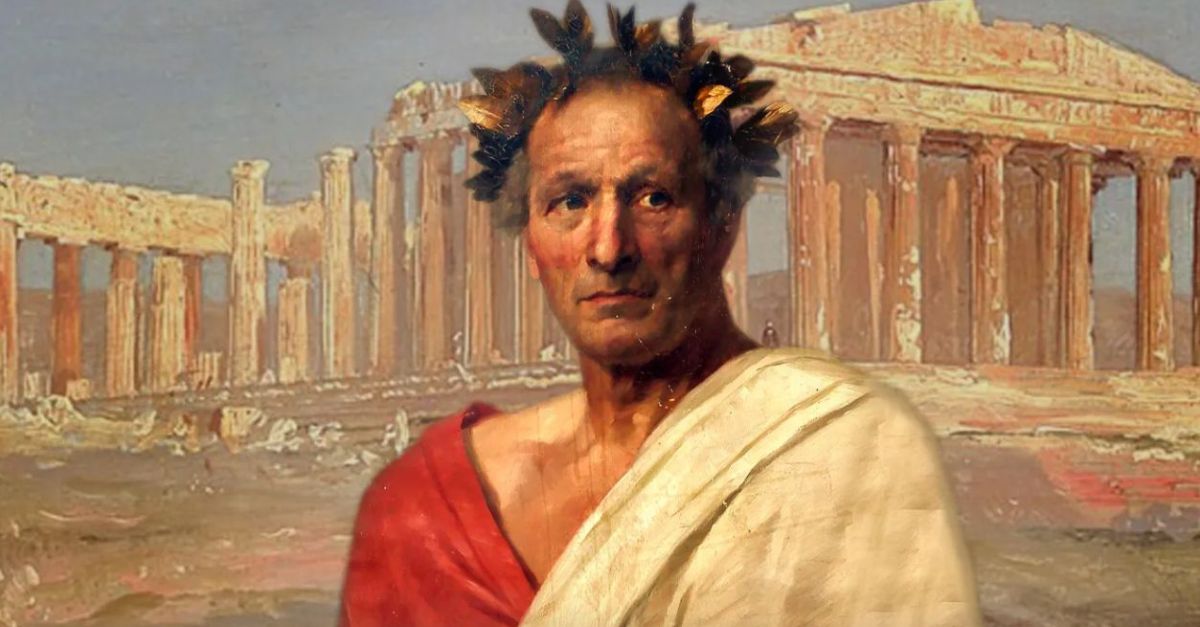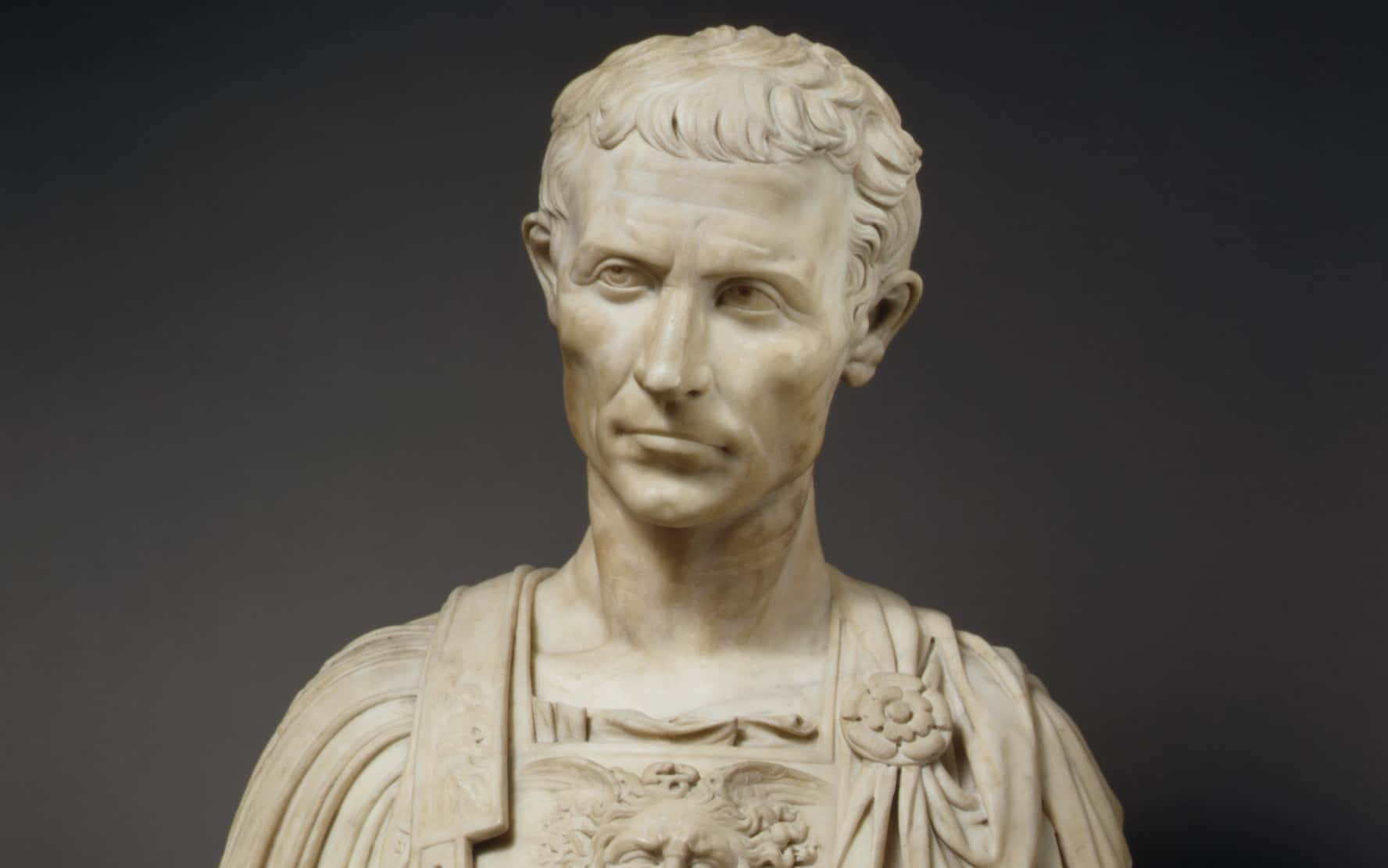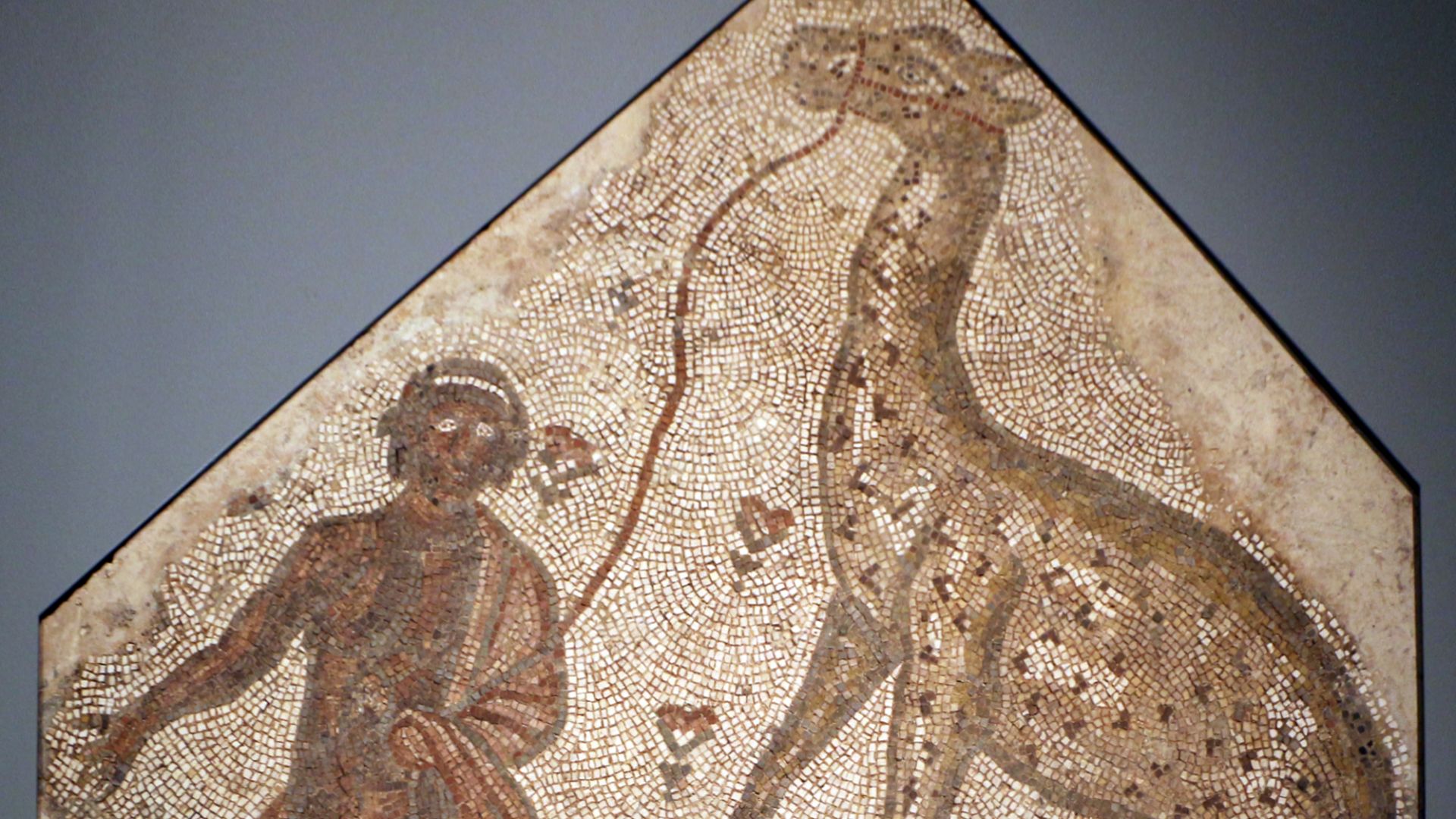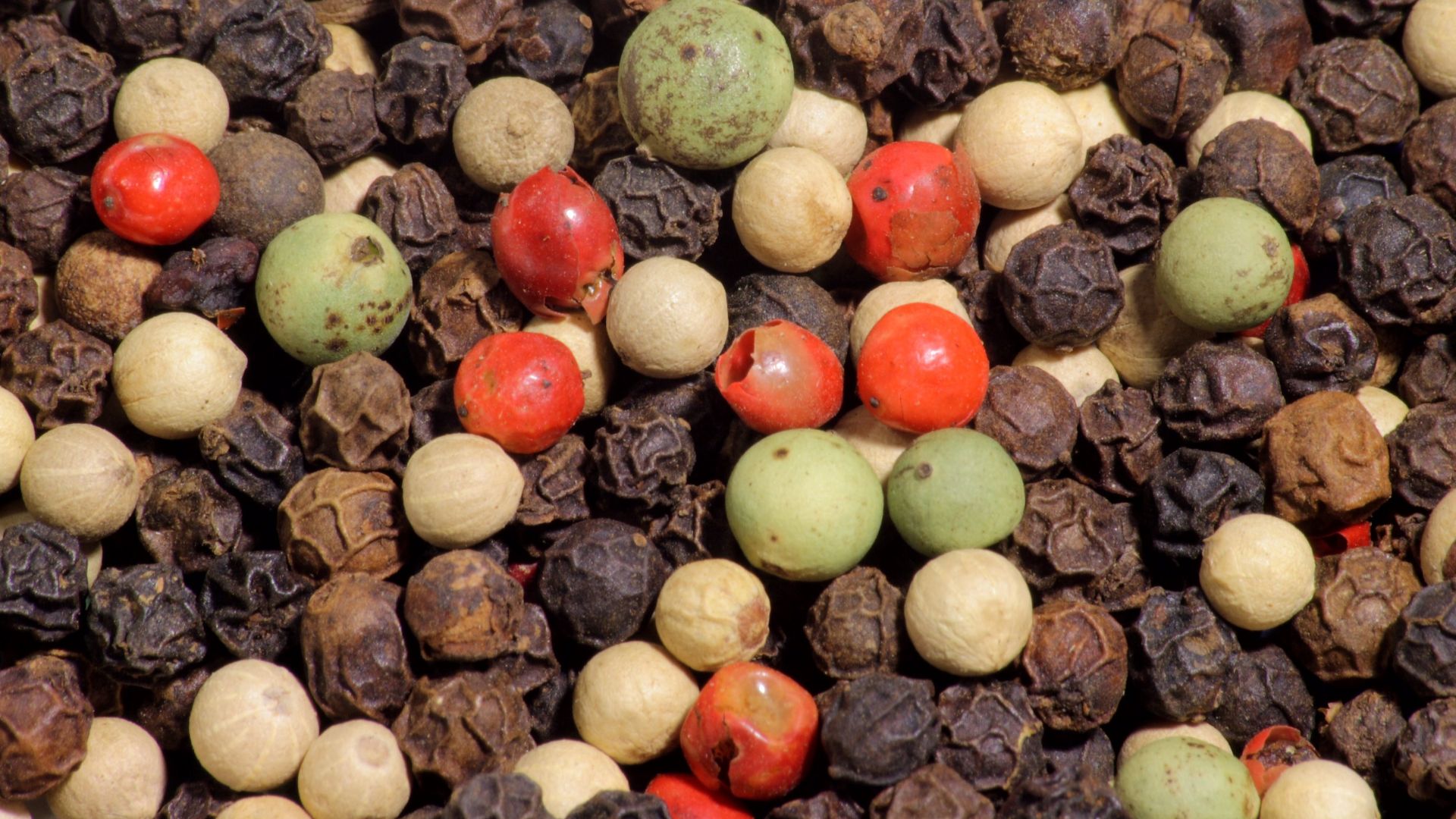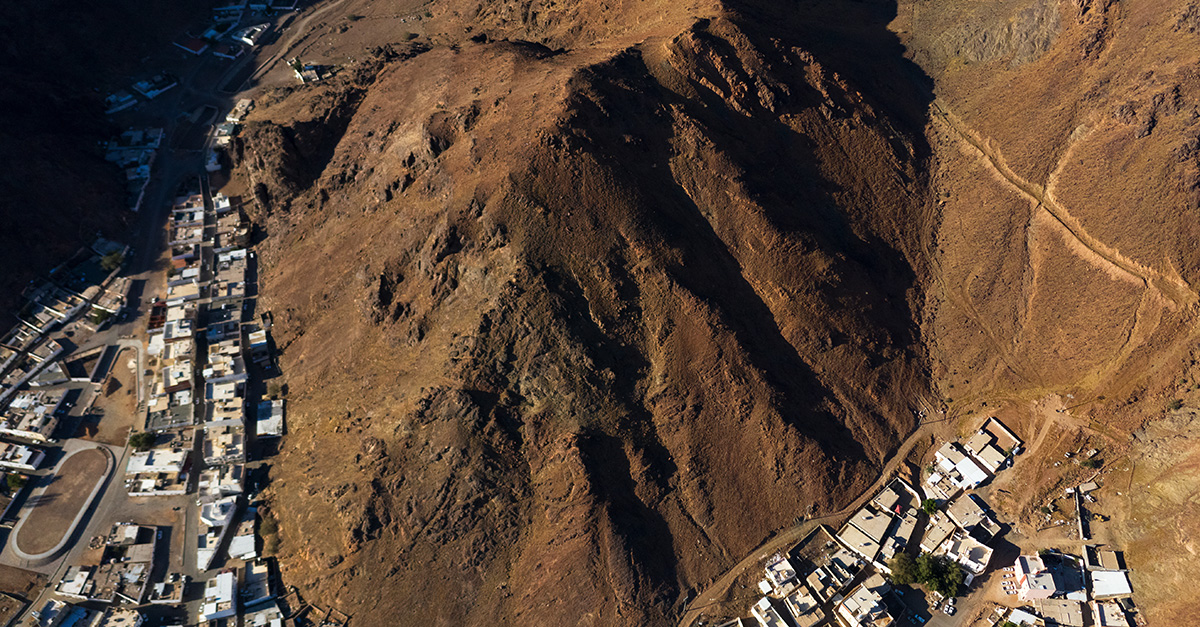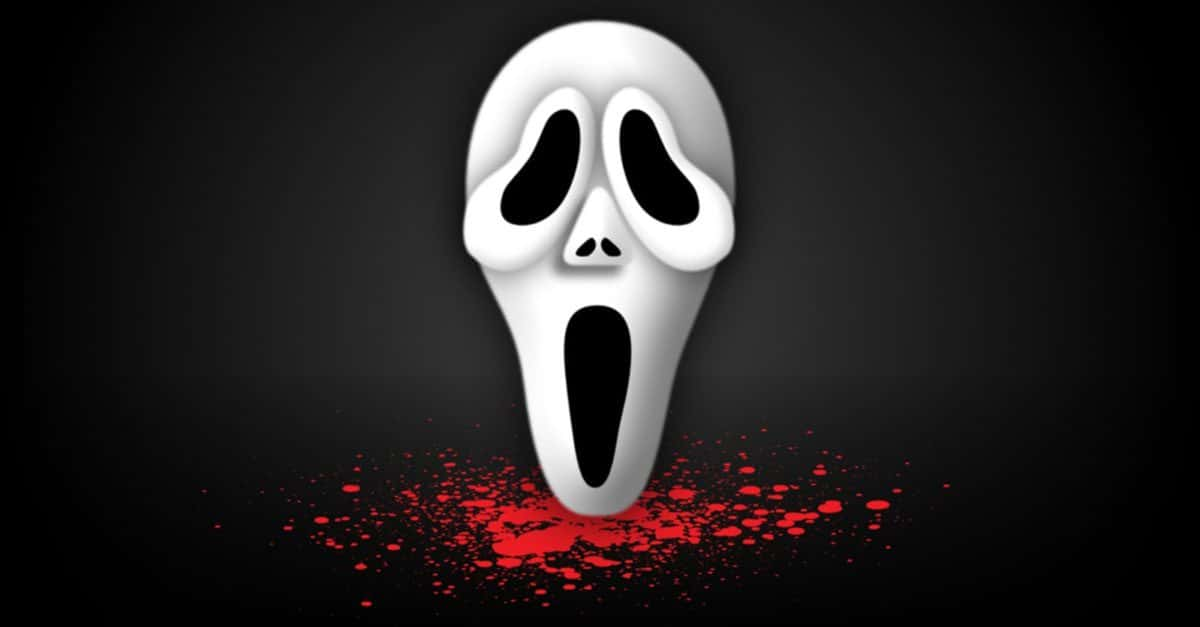How Did You Get To Rome, Mr Giraffe?
Archaeologists from the University of Cincinnati uncovered the giraffe bone in Pompeii’s drainage system, buried beneath layers of volcanic ash. What does that tell us about those times?
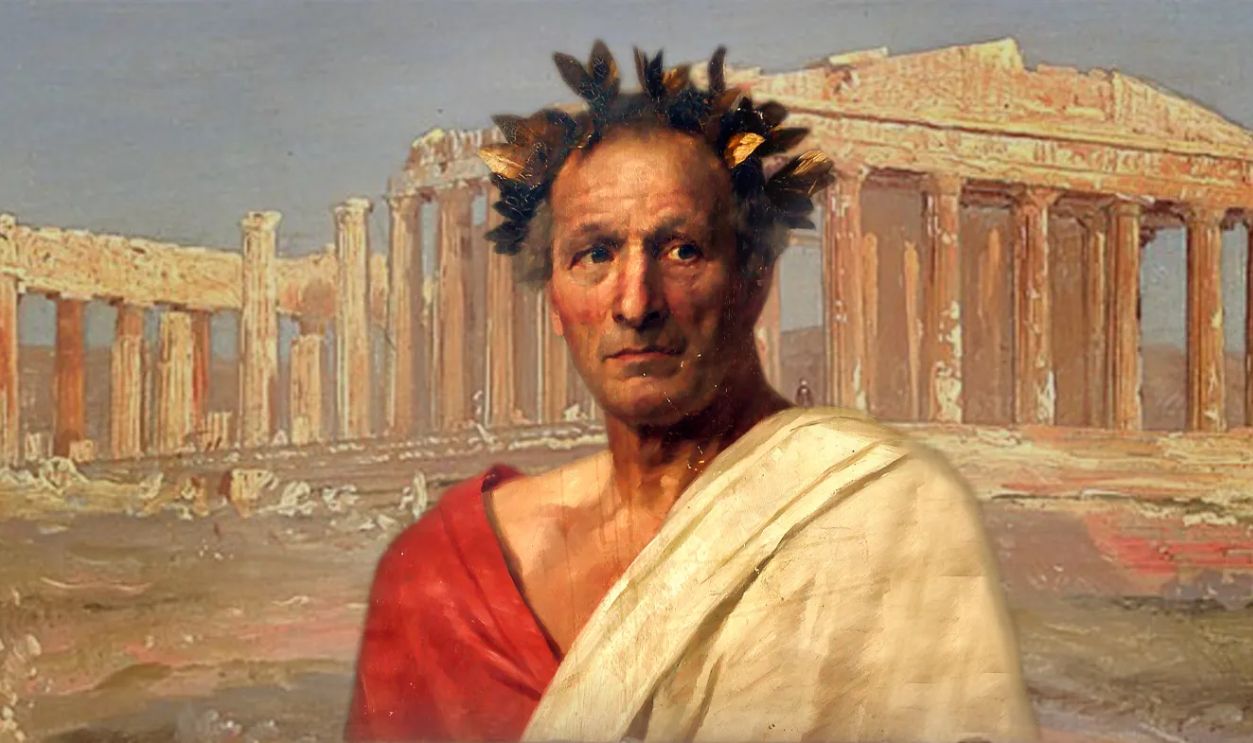
The Roman Menu Exposed
The discovery of this never-heard-before Roman menu was part of a broader excavation aimed at understanding Roman food consumption. It revealed exotic imports such as sea urchins, shellfish, and rare spices. The excavation focused on food remnants in Pompeii’s marketplaces.
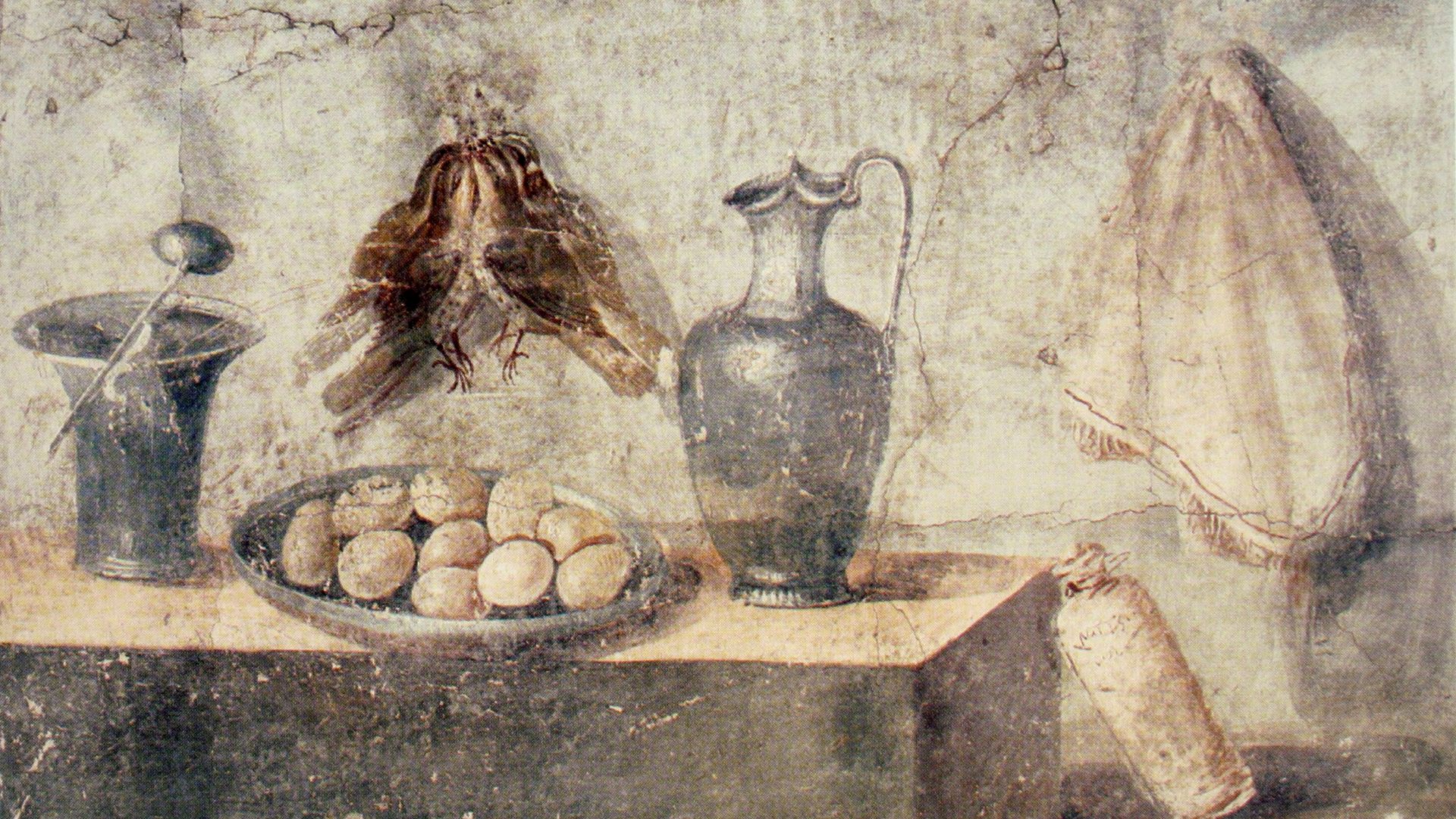 Unknown artistUnknown artist, Wikimedia Commons
Unknown artistUnknown artist, Wikimedia Commons
Who Led This Excavation
The project, led by Steven Ellis from the University of Cincinnati, focused on drainage systems in Pompeii’s commercial district. Archaeologists examined food remnants discarded in restaurants to reveal a butchered giraffe leg joint.
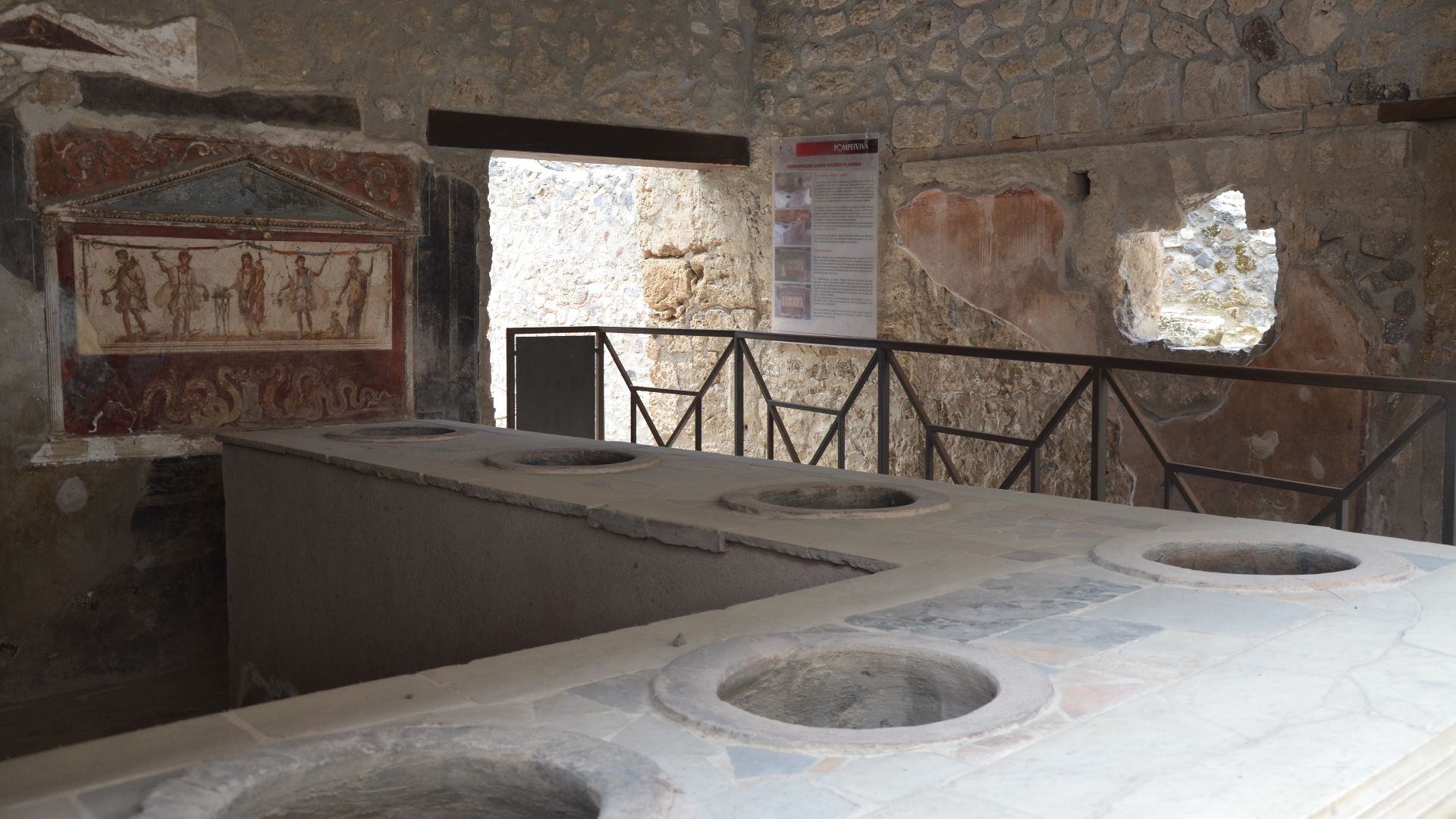 Carole Raddato from FRANKFURT, Germany, Wikimedia Commons
Carole Raddato from FRANKFURT, Germany, Wikimedia Commons
The Excavations Began In The Early 2000s
Excavations began in the early 2000s, with significant findings presented in 2014. The research spanned over a decade, covering two city blocks and around 20 shopfronts near the Porta Stabia gate. The team uncovered a variety of food remains, which highlighted what various social classes, including non-elites, ate..
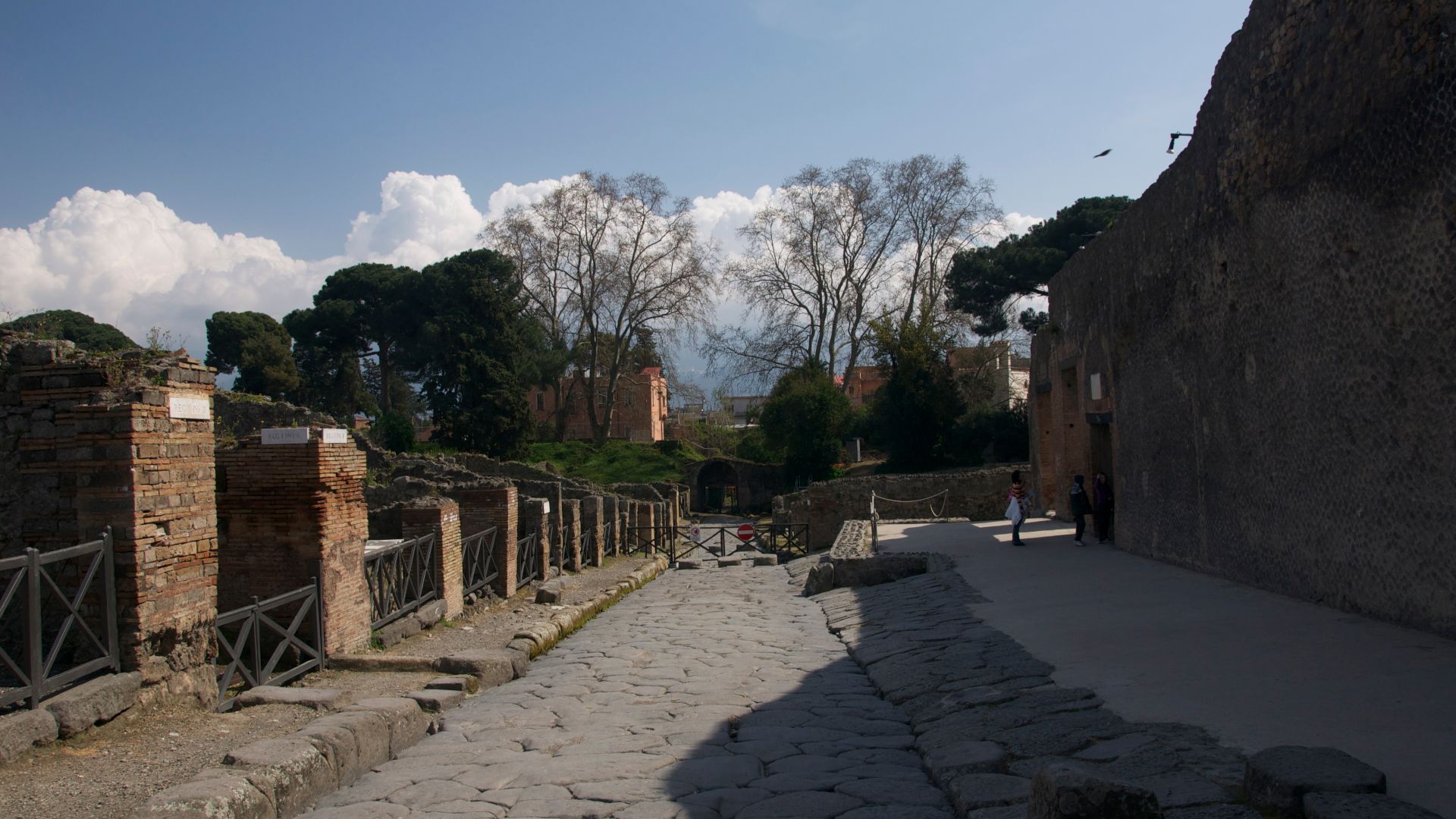 Aleksandr Zykov from Russia, Wikimedia Commons
Aleksandr Zykov from Russia, Wikimedia Commons
The Samples Were Kitchen Waste
Researchers analyzed kitchen waste, uncovering a butchered giraffe leg joint, the first of its kind ever found in Roman Italy. This finding challenged assumptions about the Roman diet. Before we get into the deep, let’s look at how a giraffe would even get to Rome because...
 Miroslav Duchacek (from Czech Republic), Wikimedia Commons
Miroslav Duchacek (from Czech Republic), Wikimedia Commons
Giraffes Are Not Native To Rome
They originate from Africa, particularly in sub-Saharan regions. Their natural habitat includes savannas, grasslands, and open forests, where they thrive due to their ability to browse high foliage. Giraffes could technically survive in the open land around Rome, but it wouldn’t be an ideal habitat for them.
 Charles J. Sharp, Wikimedia Commons
Charles J. Sharp, Wikimedia Commons
But Romans Still Imported Them
Even though Rome wasn’t their home, they were imported as exotic animals. They were often displayed in arenas and royal courts as symbols of wealth and power, brought from Africa through trade networks. Today, countries still export them, but for zoos and wildlife parks across the world.
 Thomas Fuhrmann, Wikimedia Commons
Thomas Fuhrmann, Wikimedia Commons
Romans Brought Giraffes And Other Exotic Animals Through Trade
Romans acquired giraffes through long-distance trade and military expeditions. The process of acquiring exotic animals often involved Roman soldiers, who were sent on specialized hunting missions. Historical records show that troops stationed in Egypt and North Africa were tasked with capturing lions, gazelles, and giraffes for transport to Rome.
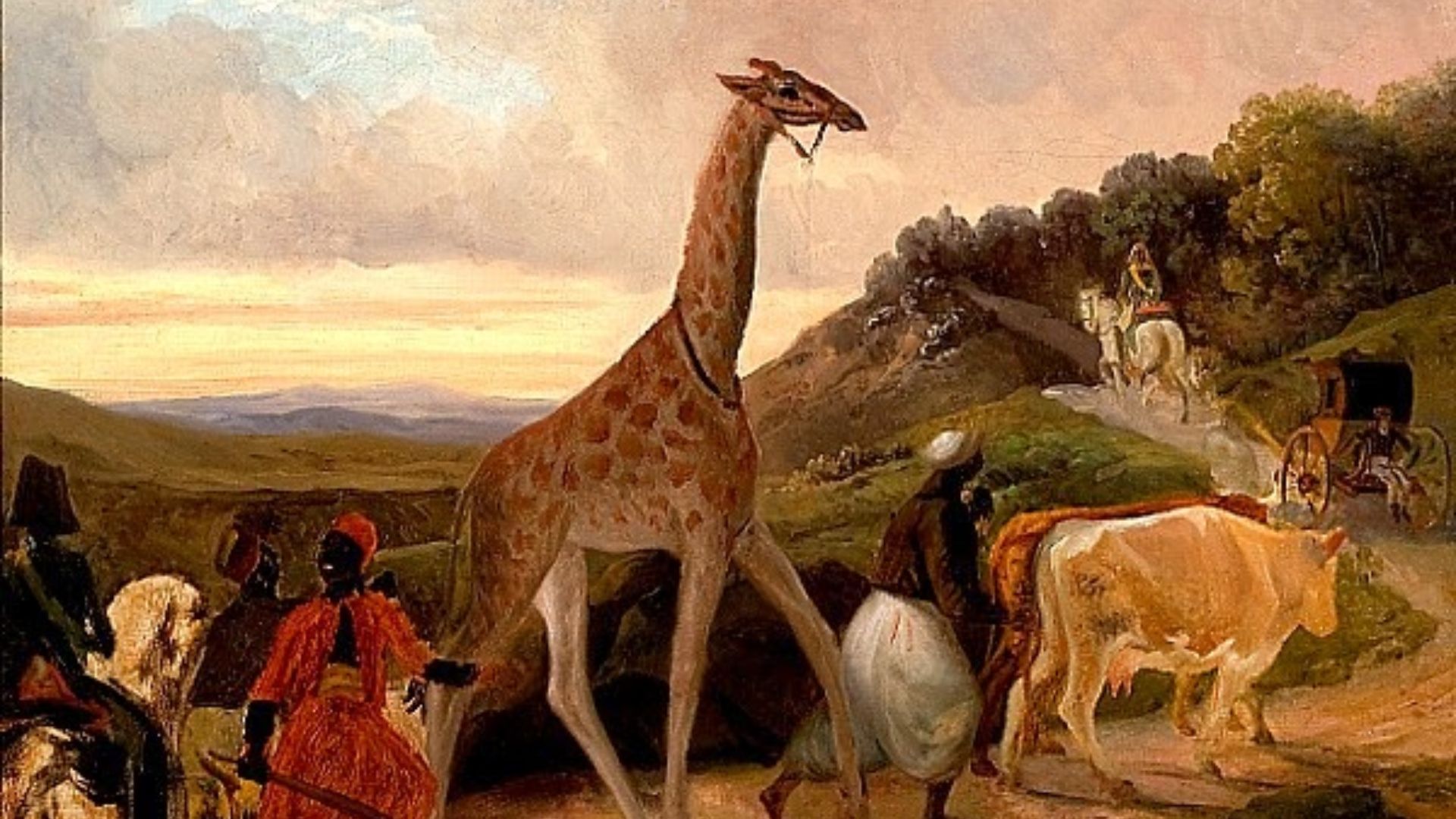 Jacques Raymond Brascassat, Wikimedia Commons
Jacques Raymond Brascassat, Wikimedia Commons
They Came To Rome Via Ship
Once captured, giraffes were transported via ships across the Mediterranean. They would arrive in ports like Alexandria and Ostia. From there, they were either sold to wealthy patrons or sent to imperial collections, where they were displayed in arenas and public spectacles.
 Gilberto Gaudio from Rome, Italy, CC BY 2.0, Wikimedia Commons
Gilberto Gaudio from Rome, Italy, CC BY 2.0, Wikimedia Commons
Julius Caesar Was Among The First Owners
Julius Caesar is credited with introducing the first giraffe to Rome in 46 BCE, parading it as a curiosity from his conquests. In his mind, he must have thought that being seen with such a new, exotic animal would elevate his status, and it did.
They Even Started Appearing In Mosaics And Artworks
The “Lod Mosaic,” discovered in modern-day Israel, is an example of Roman artistry that included a giraffe, among other exotic animals. Another notable piece is the “Mosaic Fragment with Man Leading a Giraffe,” a 5th-century Byzantine mosaic from Syria or Lebanon, which reflects Roman influence in the region.
Were Giraffes Part Of The Colosseum Culture?
Oh yes, giraffes were part of the Roman Colosseum culture, but as the prey. For that reason, they didn’t become a staple of Roman spectacles. Unlike lions, tigers, and elephants—animals that were used in gladiatorial combat or hunts—giraffes were too docile to provide the kind of violent entertainment Romans craved.
 Jean-Pol GRANDMONT, Wikimedia Commons
Jean-Pol GRANDMONT, Wikimedia Commons
They Just Did Not Fit The Violent Culture Of These Arenas
Even with an attempt to include them in the arena, their gentle nature made them uninteresting to bloodthirsty audiences, and the idea was quickly abandoned. Instead, giraffes were more commonly displayed in triumphal processions or as exotic curiosities. Their long necks and legs and intricate markings seemed royal.
 Stefano Bianchetti, Getty Images
Stefano Bianchetti, Getty Images
Giraffes Might Have Served As Diplomatic And Political Strategy
Giraffes might have also been exchanged as diplomatic gifts to strengthen alliances between Rome and foreign rulers. These exchanges could have helped secure trade agreements, reinforcing Rome’s influence across Africa and beyond.
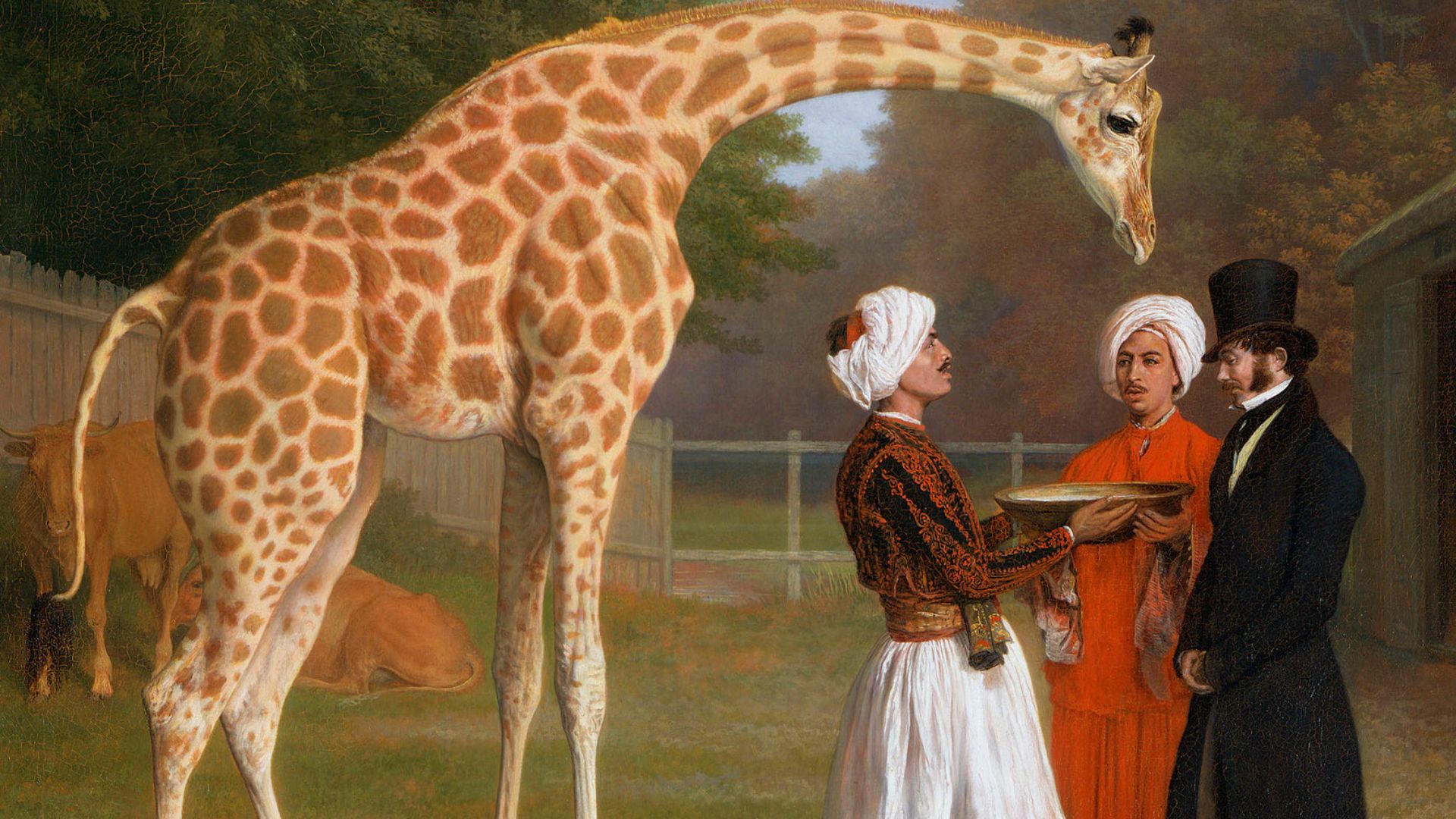 Jacques-Laurent Agasse, Wikimedia Commons
Jacques-Laurent Agasse, Wikimedia Commons
Uncovering Pompeii’s Hidden Trade Networks
The excavation at Pompeii’s Porta Stabia revealed a complex marketplace where food remnants provided insight into Roman trade. Archaeologists sifted through drainage systems to uncover exotic imports that had butchered giraffe bones.
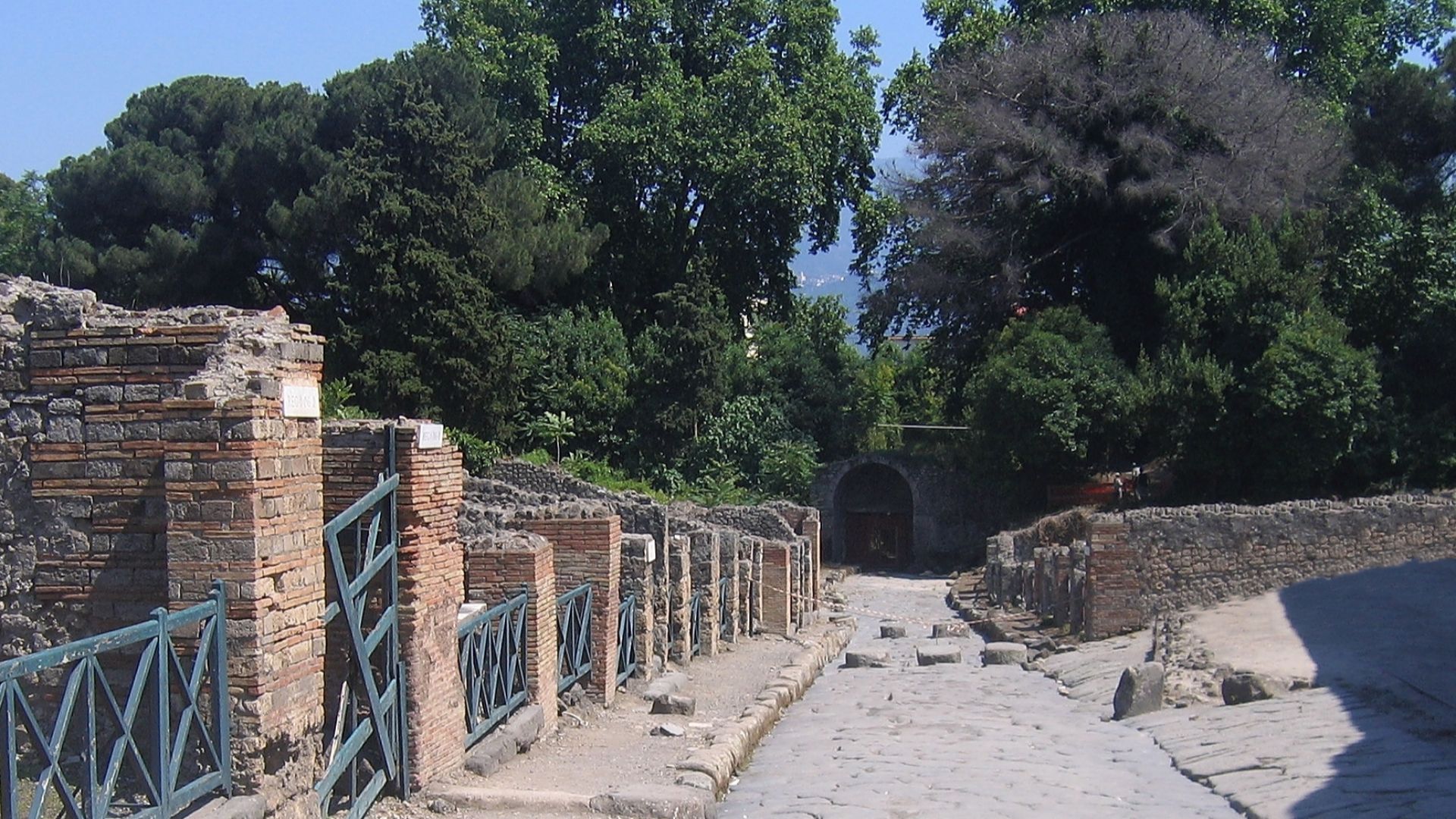 Pierre Andre Leclercq, Wikimedia Commons
Pierre Andre Leclercq, Wikimedia Commons
Analyzing The Layers Of Volcanic Ash
Researchers examined stratified deposits, tracing food waste buried beneath layers of volcanic material. The giraffe bone was found among found among food waste, likely discarded shortly before Mount Vesuvius erupted in 79 AD. This analysis helped reconstruct the final moments of Pompeii’s destruction.
Mount Vesuvius Ended Pompeii
For those who are unfamiliar with the event, Mount Vesuvius spewed scorching lava in 79 AD and was buried under thick layers of volcanic ash and pumice from pyroclastic surges. Archaeologists have since uncovered streets, arenas, homes, and even food remains.
 MapMaster, CC BY-SA 3.0, Wikimedia Commons
MapMaster, CC BY-SA 3.0, Wikimedia Commons
Giraffe Seemed To Be On A Commoner’s Menu
Evidence suggests that middle-class and lower-class residents also had access to exotic foods, such as giraffes and sea urchins. While the elite certainly indulged in lavish feasts, the presence of giraffe meat in a public eatery suggests that even commoners could occasionally experience these rare foods.
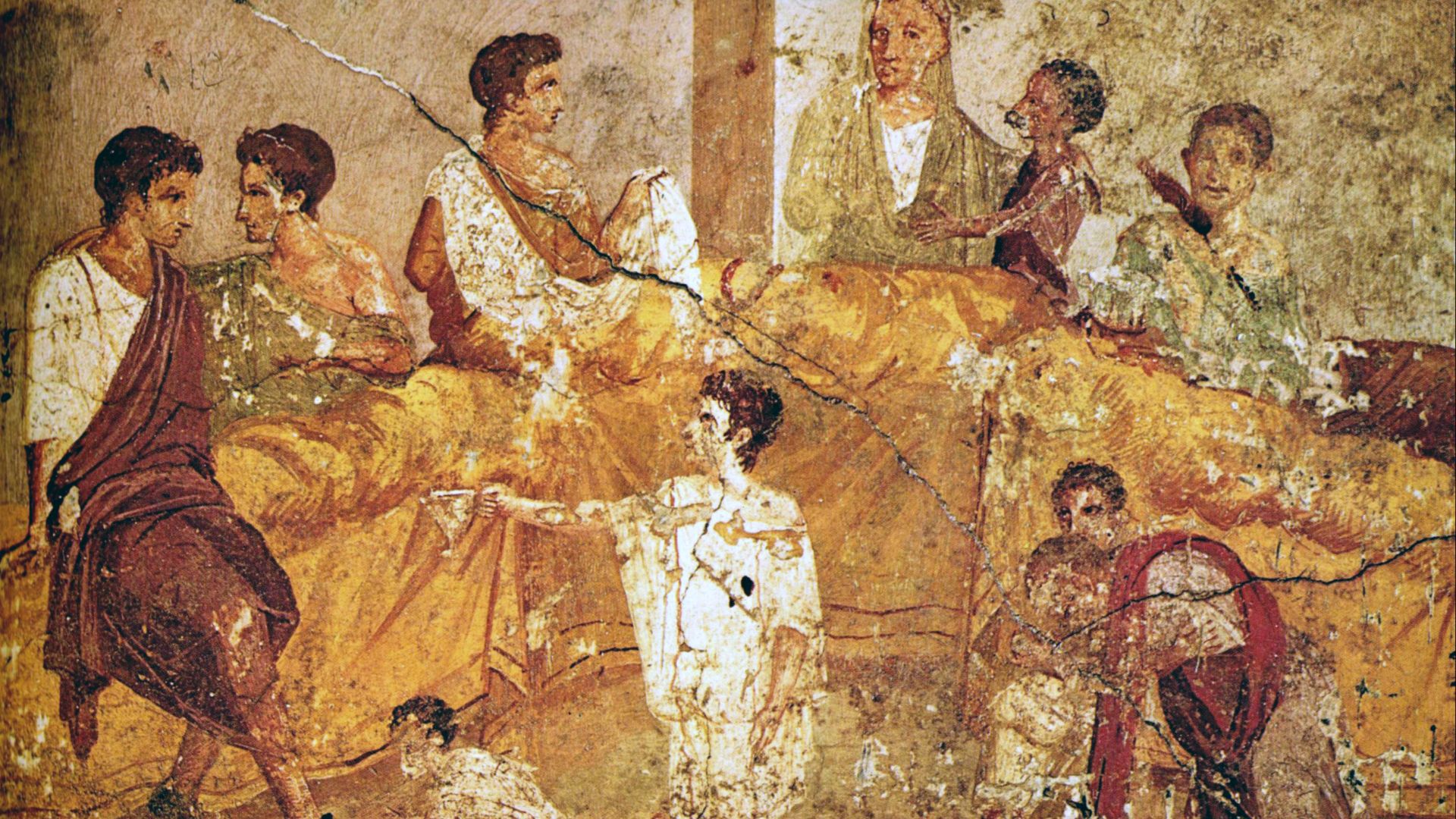 Unknown artistUnknown artist, Wikimedia Commons
Unknown artistUnknown artist, Wikimedia Commons
How Giraffe Meat Was Enjoyed In Roman Cuisine
Ancient Roman chefs likely slow-cooked giraffe meat. Given its rarity, it may have been roasted or stewed, served at elite banquets (or at higher prices on menus). The meat’s texture would have required marination, possibly in vinegar or honey, to tenderize before cooking. There’s more.
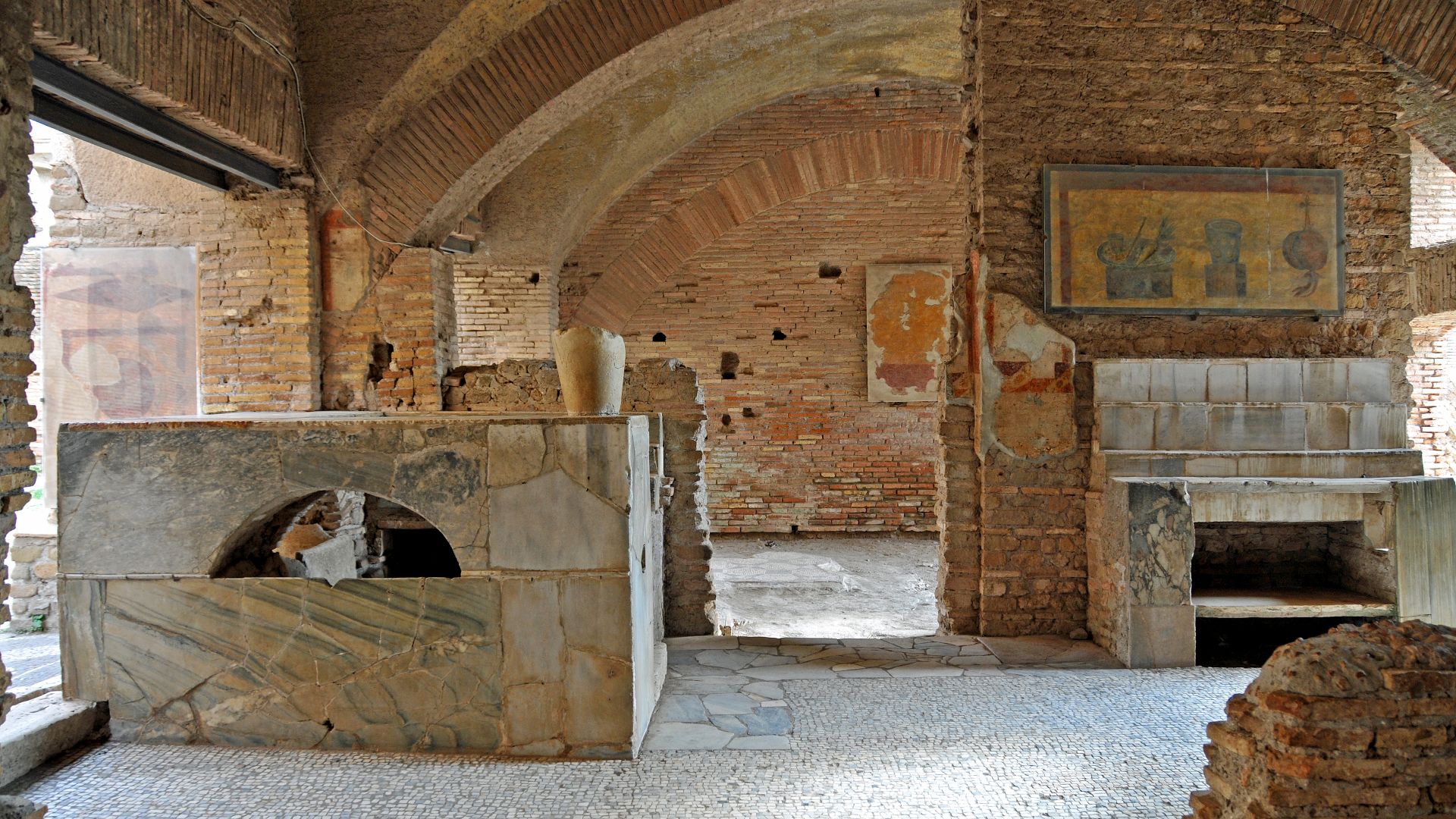 Dennis G. Jarvis, Wikimedia Commons
Dennis G. Jarvis, Wikimedia Commons
Flamingo As A Roman Delicacy
Only Rome’s elite dined on flamingos imported from African salt lakes. A roast fenicopterus—“scarlet-wing”—was a display of wealth. The rich savored its gamey meat, often boiled with spices or honeyed wine. True gourmets favored delicacies like the tongue or even the brain.
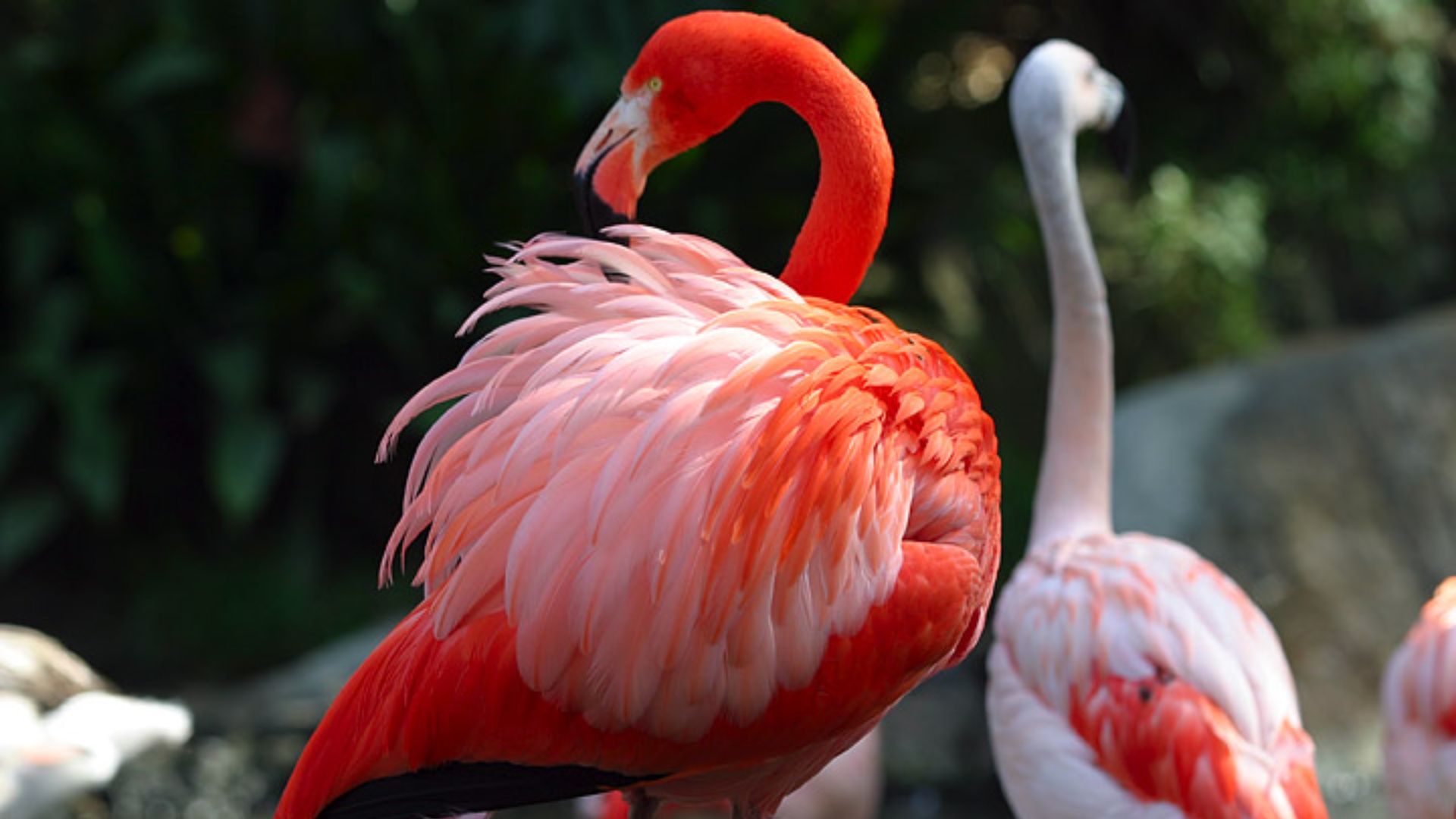 Solipsist~commonswiki, Wikimedia Commons
Solipsist~commonswiki, Wikimedia Commons
Sea Urchins In Pompeii’s Markets
Sea urchins enjoyed raw or baked with herbs and oil, offered a briny richness to Roman seafood dishes. Their presence in Pompeii suggests a connection to coastal trade. This recent research reveals that even the lower classes of Romans feasted on urchins. Today urchins are stil relished.
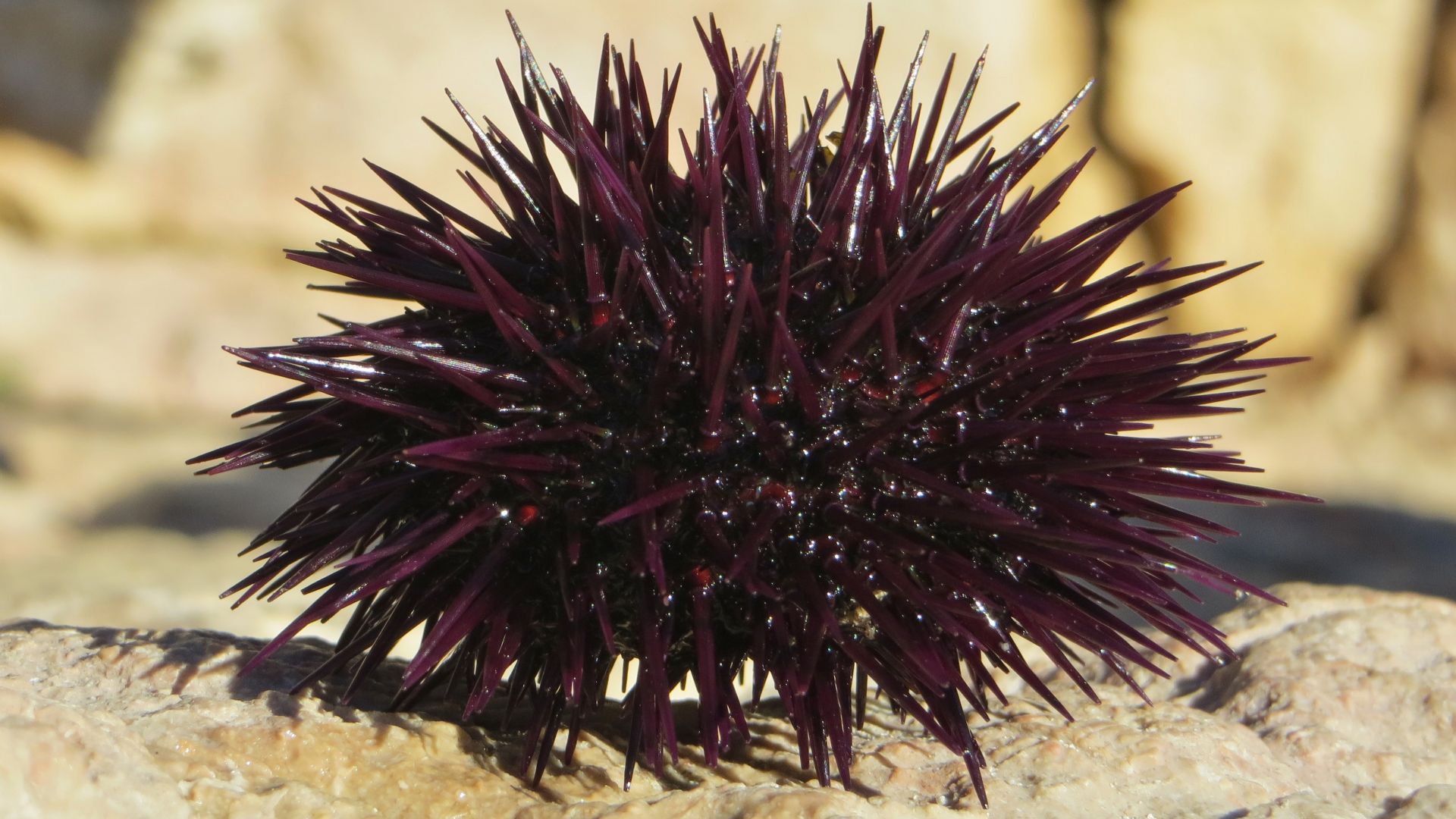 Frederic Ducarme, Wikimedia Commons
Frederic Ducarme, Wikimedia Commons
Imported Spices In Roman Cooking
Spices like pepper, cinnamon, and saffron were imported from distant lands, and such spices are what made some of the above meats delicacies. They were used to season meats, enhance sauces, and preserve food. Even though these spices were expensive, restaurants might have gotten their hand on them to cook.
Salted Fish From Spain
Romans also imported salted fish, preserving it for long journeys. Fish was often grilled or mixed into stews to provide a protein-rich meal. The salting process ensured a long shelf life, and it made it a staple in Pompeii’s eateries. This trade linked Rome to Iberian coastal economies.
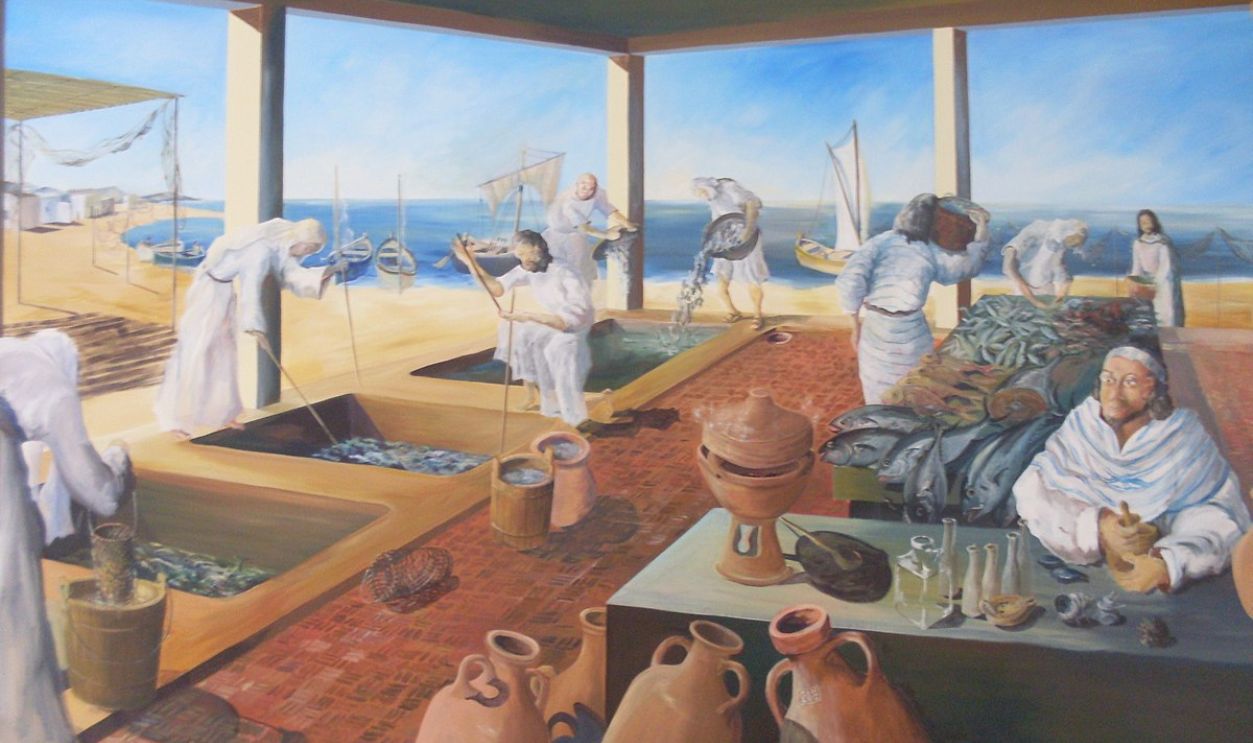 M.Rais, Public domain, Wikimedia Commons
M.Rais, Public domain, Wikimedia Commons
Here’s What They Also Found
Pork and goat meat. Romans roasted, stewed, or grilled these meats, often seasoning them with herbs and olive oil. Goat meat was particularly common among lower-class citizens. They also found evidence of fava beans, which were used to flavor wine and add flavor to stews.
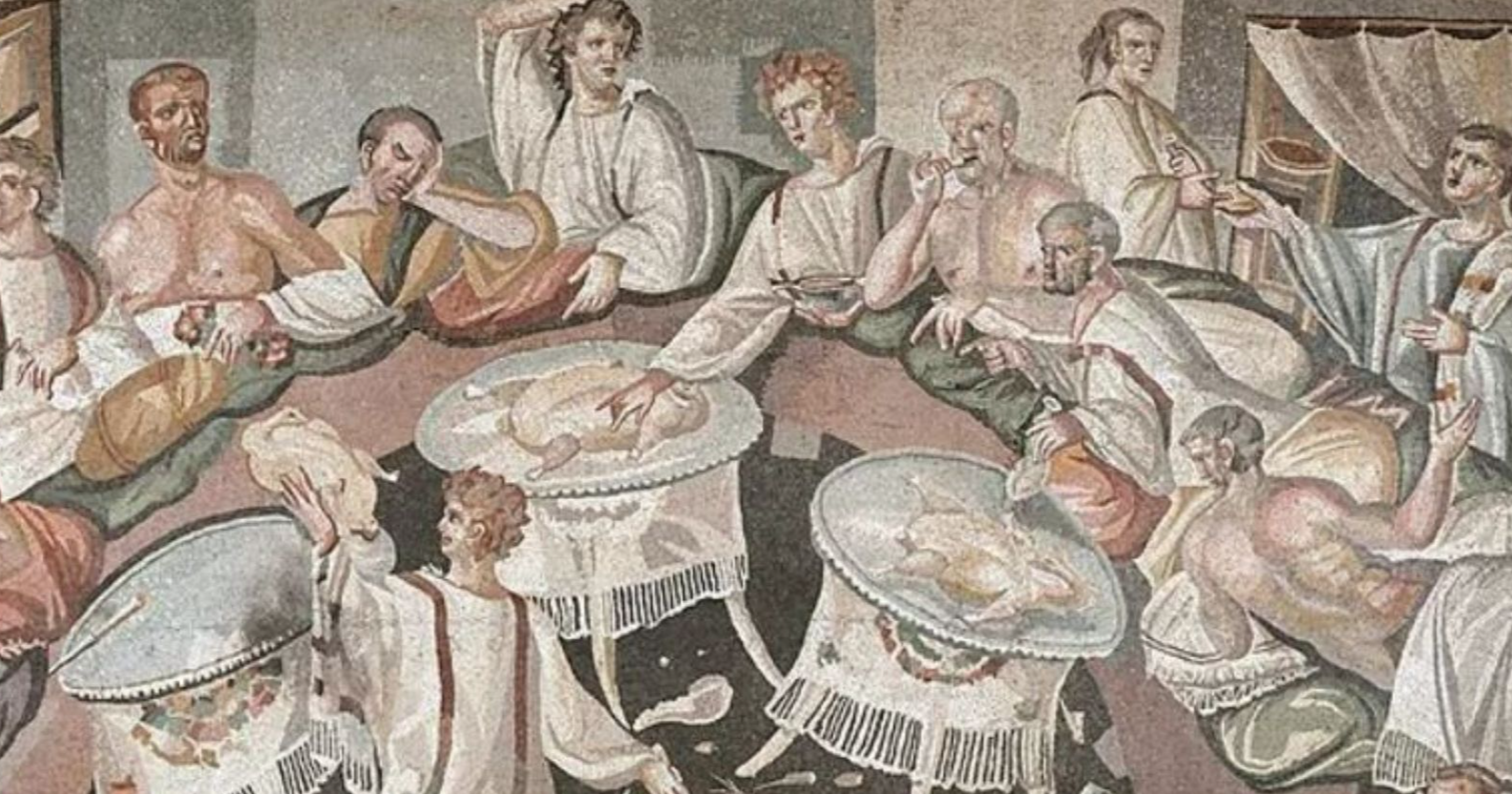 Ancient Roman, Wikimedia Commons
Ancient Roman, Wikimedia Commons
What We Know About Ancient Romans From This
The discovery of a butchered giraffe leg joint in Pompeii’s drainage system provided groundbreaking evidence that Romans engaged in long-distance trade for exotic animals as food, too. Previously, historians believed that such creatures were primarily used for elite consumption, but this find suggests that even working-class citizens had access.
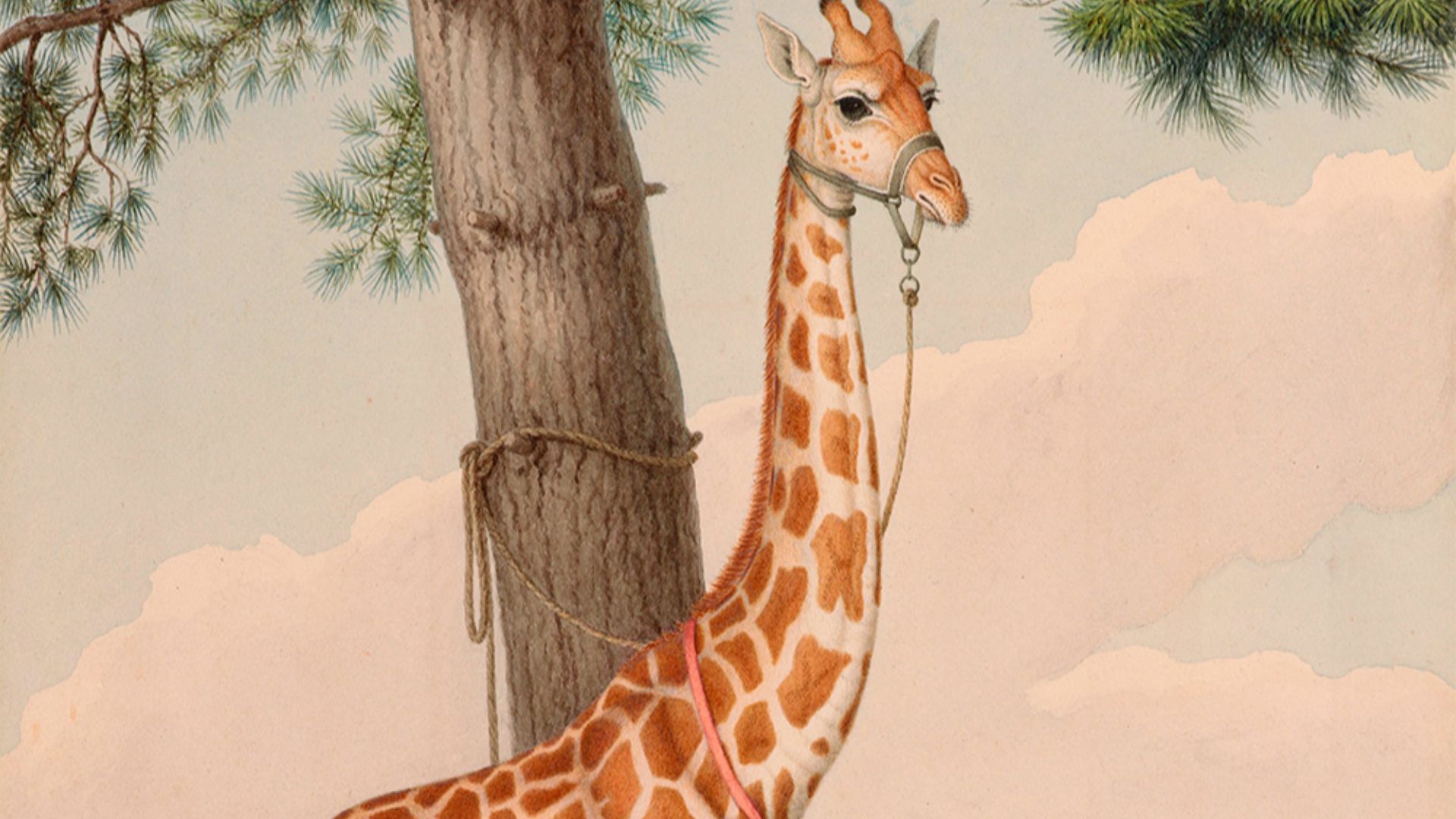 Nicolas Huet the Younger (1770-1830), Wikimedia Commons
Nicolas Huet the Younger (1770-1830), Wikimedia Commons
The Conclusion
Archaeologists concluded that Pompeii’s economy was deeply connected to global trade networks, importing not only spices and textiles but also wild animals from Africa. The presence of giraffe meat in a non-elite eatery challenges assumptions about Roman dining habits to prove that exotic foods were more widely available.
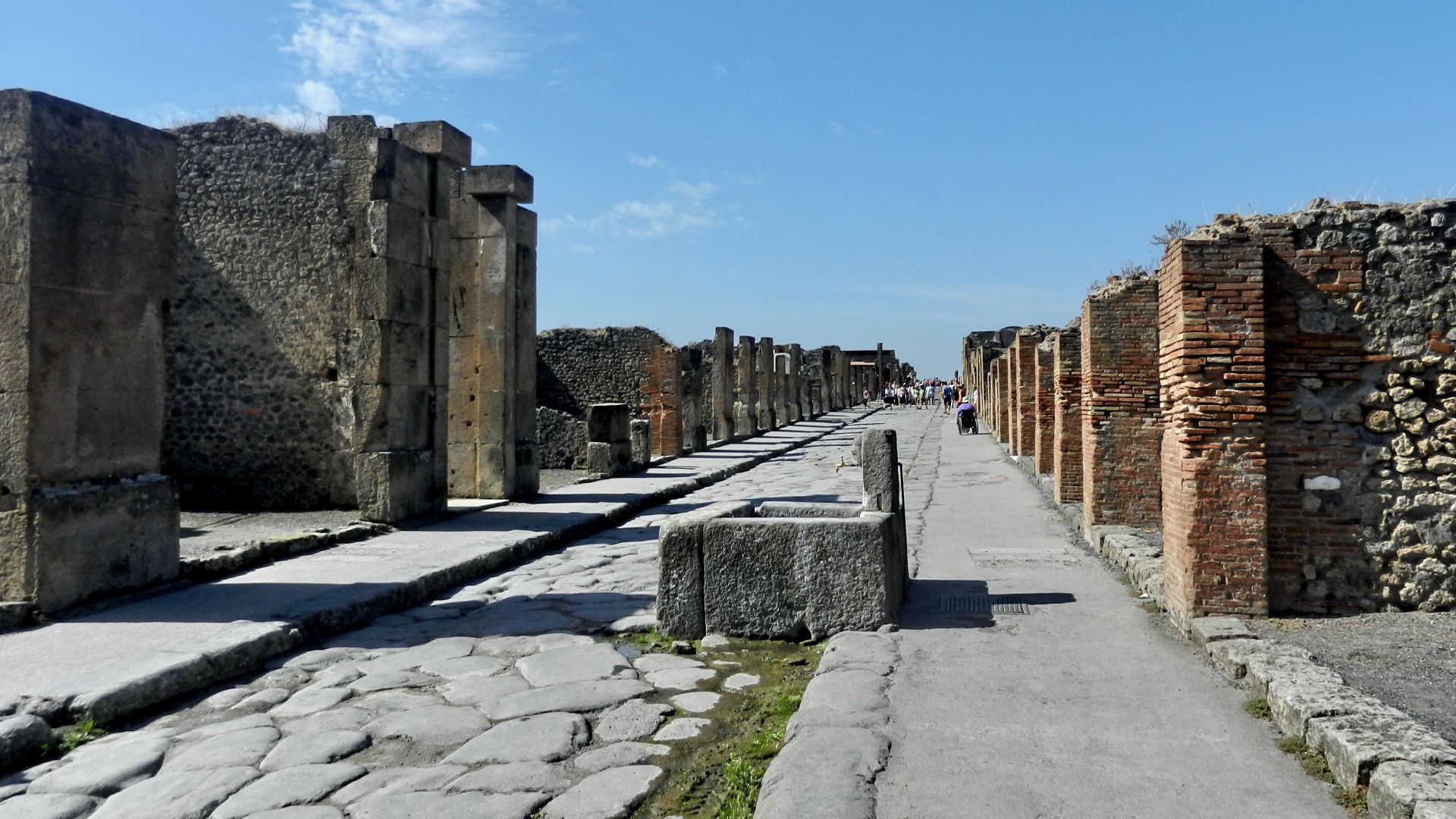 Tanya Dedyukhina, Wikimedia Commons
Tanya Dedyukhina, Wikimedia Commons

